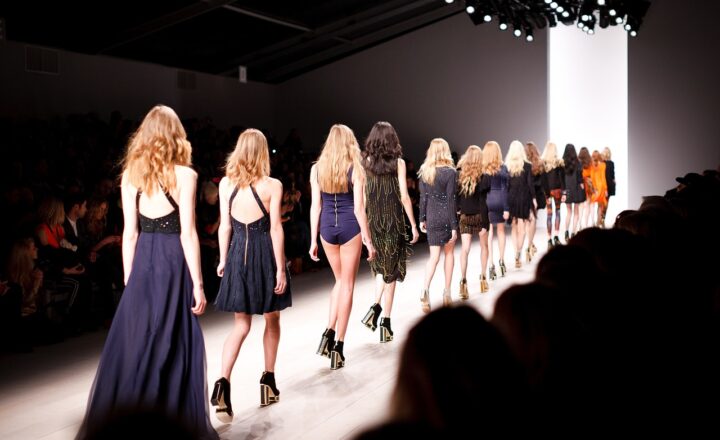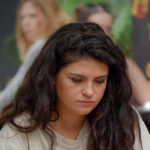Decoding Style: What Fashion Trends Say About Our Lives in the 2020s
November 19, 2024

Fashion is a mirror reflecting the society we live in. In every decade, garments and styles tell stories about our culture, identities, and the times we inhabit. As we navigate through the 2020s, the fashion trends emerging today showcase not merely aesthetics but profound narratives about who we are, our values, and where we see ourselves heading. In this article, we will embark on a journey to decode the fashion trends of the present decade and what they signify about our lives.
1. The Rise of Sustainability: Fashion with a Conscience
Over the past few years, there has been a marked shift towards sustainable fashion. Consumers are increasingly aware of the environmental impact of the fashion industry, which has historically been criticized for its wastefulness and exploitative labor practices. Today’s fashion represents a more conscientious approach, characterized by:
- Eco-Friendly Materials: Designers are opting for materials like organic cotton, recycled polyester, and innovative fabrics created from waste, leading to a marketplace that emphasizes environmental stewardship.
- Slow Fashion Movement: In direct opposition to the fast fashion phenomenon, consumers are now investing in timeless pieces designed to last, encouraging thoughtful consumption and artisan craftsmanship.
- Transparency: Many brands are embracing transparency in their supply chains, allowing consumers to understand the origins of their clothes and the labor conditions involved in production.
This trend signals a generation that is not only style-conscious but also highly aware of their social responsibilities, aiming to create a better future through their purchasing choices.
2. Individualism and Self-Expression
The 2020s are all about celebrating unique identities. In an age dominated by social media and global connectivity, personal style has evolved into a form of self-expression, allowing individuals to craft and curate their narratives. Key features of this trend include:
- Mixing Styles: From punk to preppy, and streetwear to haute couture, the blending of diverse styles showcases a world embraced by fluidity, encouraging wearers to define their identities through clothing choice.
- Gender Fluidity: Many individuals are breaking free from traditional gender norms with fashion, adopting silhouettes and pieces traditionally associated with the opposite gender, showcasing an important shift towards inclusivity.
- Custom and DIY Fashion: The accessibility of online marketplaces and platforms inspires individuals to customize their clothing or create their own garments, bringing a touch of personal flair to mainstream fashion trends.
The overarching theme of individualism in fashion reflects a society in which people yearn to assert their identities uniquely and authentically.
3. The Influence of Technology on Fashion Trends
In the 2020s, technology’s impact on fashion is more pronounced than ever before. From shopping habits to garment innovation, technology bridges the gap between creators and consumers:
- Digital Fashion: The advent of digital fashion has given rise to virtual clothing that exists in cyberspace, allowing users to dress their avatars and participate in virtual experiences. Companies like The Fabricant are leading the way in this emerging sector.
- Augmented Reality (AR): AR technology enhances shopping experiences, allowing customers to visualize how clothing fits them without physically trying it on, reducing friction and encouraging purchases.
- Online Communities: Platforms like Instagram and TikTok have transformed how fashion trends emerge and spread. Influencers and everyday users alike showcase their style, creating movements like #OOTD (Outfit Of The Day) that spark global trends instantaneously.
Technology’s role in the fashion industry encapsulates a transformative approach—one that merges style with innovation, reflecting a culture that embraces change and adapts accordingly.
4. Nostalgia and Throwback Aesthetics
The 2020s also witness a revival of past trends, with nostalgia playing a pivotal role in today’s fashion landscape. Millennials and Gen Z are drawing inspiration from previous decades, leading to:
- Y2K Revival: The aesthetic of the early 2000s—think low-rise jeans, crop tops, and bold colors—is making a comeback, showcasing how nostalgia influences contemporary style choices.
- 90s Grunge and Vintage Styles: Elements of 90s grunge, such as oversized flannels, combat boots, and vintage sneakers, are highly sought after, embodying a sense of comfort and rebellion amidst today’s fast-paced world.
- Throwback Collaborations: Collaborations with renowned brands from the past evoke a sense of comfort and familiarity, appealing to consumers’ nostalgic sentiments while introducing them to modern iterations of beloved styles.
This trend reveals our collective desire to find solace in familiar styles while adapting them into modern contexts, providing continuity and connection in a fast-evolving world.
5. Health, Comfort, and Functionality in Fashion
As we have navigated through global challenges in recent years, health and comfort have emerged as key priorities in the fashion industry. Clothing is being designed with:
- Athleisure on the Rise: The blending of athletic wear with everyday clothing continues to gain traction, prioritizing comfort and versatility for a lifestyle that blends home, work, and fitness seamlessly.
- Adaptive Clothing: More designers are creating lines that offer functional and stylish solutions for people with disabilities. Fashion is shifting to accommodate diverse body types and needs, prioritizing inclusivity and accessibility.
- Health-Conscious Fabrics: The textile industry is innovating materials that promote well-being, such as fabrics that regulate temperature, wick moisture, or offer UV protection, reflecting the heightened importance of health in our daily lives.
These trends signify a holistic approach reflecting societal values focused on health and personal well-being as the foundation of a modern lifestyle.
Conclusion: Fashion as a Reflection of Our Times
In conclusion, the fashion trends of the 2020s tell intricate stories about who we are and the values we uphold as a society. As we embrace sustainability, individualism, technological innovation, nostalgia, and a focus on comfort, fashion becomes not just a means of personal expression but a powerful commentary on the life and times we inhabit.
As these trends evolve, they will continue to shape our cultural landscape, reflecting the ever-changing dynamics of our lives. The future of fashion promises to be as diverse and multifaceted as the individuals it serves. Enjoy experimenting with these trends, and embrace the message they convey about your identity and values in our shared journey through this decade.






